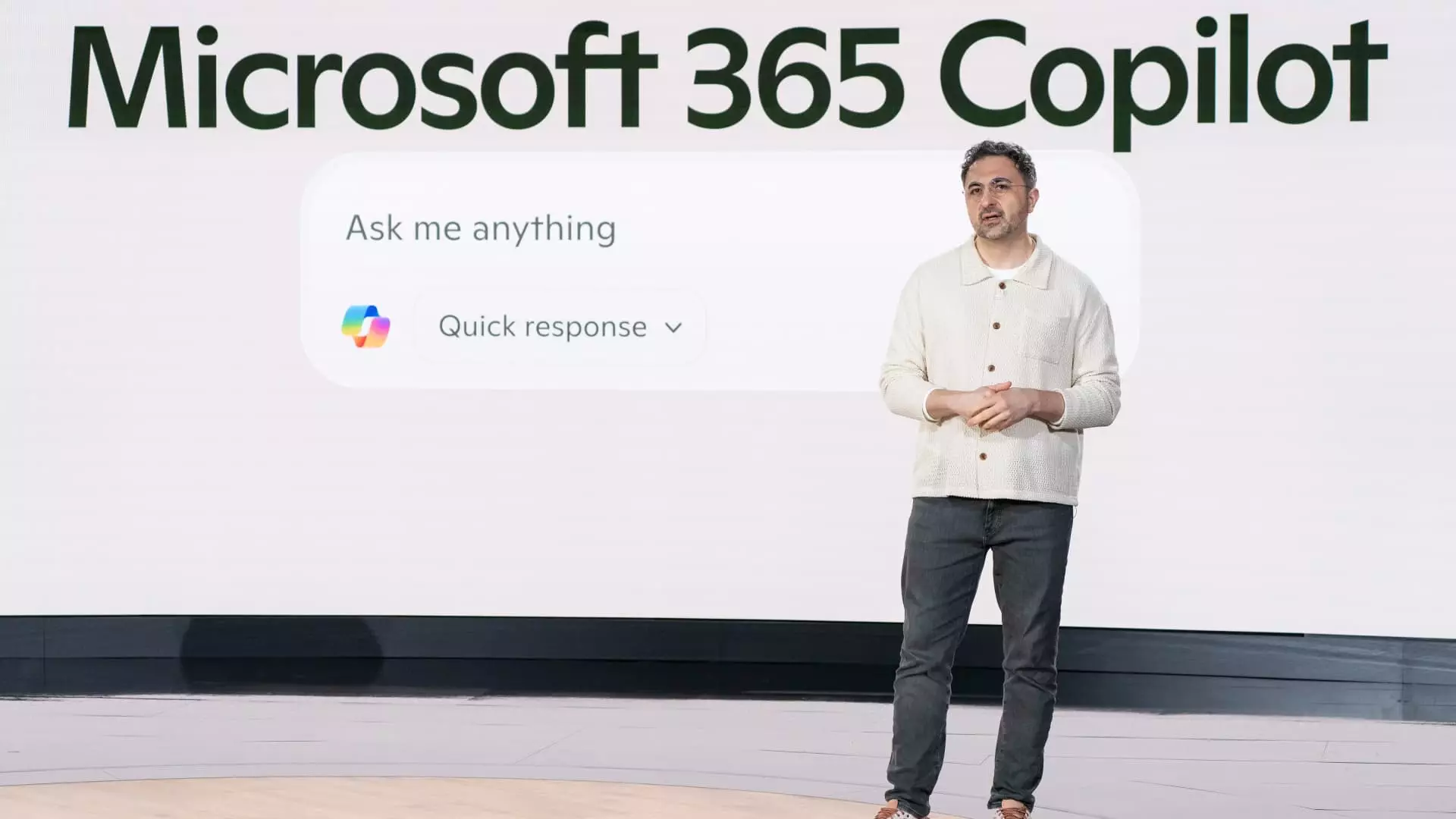In the fast-paced world of artificial intelligence, Microsoft stands out by adopting a decidedly different strategy compared to its competitors. While other tech giants race to innovate with cutting-edge models, Microsoft has chosen to sit back and evaluate the landscape. This decision stems from the insight of Mustafa Suleyman, Microsoft’s CEO of AI, who asserts that waiting for new developments—typically three to six months behind industry frontrunners—has distinct advantages. He posits that this “off-frontier” approach could prove more cost-effective while allowing the company to focus on specific, problem-solving use cases.
The rationale behind this methodology is straightforward: by holding off on jumping headfirst into developing state-of-the-art AI, Microsoft can leverage existing breakthroughs without incurring the high costs associated with first-generation innovations. This strategy enables the company to fine-tune its offerings, ensuring that resources are focused on projects where they can provide substantial value rather than taking unnecessary risks with unproven technologies.
The Dynamics of Strategic Partnerships
Microsoft’s recent endeavors are heavily influenced by shifting alliances in the tech industry. Historically, the collaboration with OpenAI has been paramount in propelling Microsoft’s AI capabilities, with a staggering investment amounting to $13.75 billion. However, as Suleyman noted, the relationship is evolving, with OpenAI exploring partnerships with other entities like Oracle. This shift highlights a gradual move toward broader competition rather than a singular focus on Microsoft’s Azure cloud services.
This transitional landscape presents both a challenge and an opportunity for Microsoft. As it navigates the complexities of these partnerships, the company is also investing in its in-house AI capabilities, aspiring to become more self-reliant. Suleyman emphasizes the long-term vision of Microsoft’s AI strategy, suggesting that in the coming years, the company aims to maintain a solid footing in the AI arena through a combination of collaboration and internal development.
Innovating Within Constraints
When contemplating the future of AI, Suleyman indicates that rather than striving to deliver the industry’s leading AI models, Microsoft is focusing heavily on optimizing its existing systems. This strategic pivot to fostering continuous improvement can be seen as both an acknowledgment of the practical realities of AI innovation and a calculated approach to maximize user engagement through efficient technology.
Products like Microsoft’s Copilot are prime examples of this philosophy at work. By enhancing these tools with features like memory retention, Microsoft is investing in user experience rather than merely competing for technological supremacy. This practical approach allows the team to refine existing models and integrate more user-friendly features, contributing to their competitive edge in the ever-crowded AI market.
Understanding the Long Haul in AI Development
Suleyman’s insights prompt an essential conversation about the future of AI technology. The notion of ‘not developing the absolute frontier’ raises questions about what it means to excel in a rapidly evolving field. For Microsoft, the valuable lesson seems to be that innovation must balance speed with sustainability. Competing on the bleeding edge may garner initial accolades, but ultimately, a thorough, measured approach could offer the resilience necessary to thrive in the long term.
In aligning with this philosophy, Microsoft highlights the importance of having a robust AI team and extensive computational resources. Yet, the focus remains firmly on identifying beneficial use cases rather than racing to be the first to market with ‘the best’ AI model. By carefully calibrating its ambitions with realistic expectations, Microsoft positions itself as a pragmatic player in the evolving technological landscape.
Customer-Centric AI Development as a Priority
At the heart of Microsoft’s AI strategy lies a deep understanding of customer needs. By prioritizing features that enhance user experience—like the memory capabilities of Copilot—Microsoft aims to cultivate a loyal user base while also reducing the risks typically associated with pioneering new AI developments. This perspective accentuates the belief that creating tailored, reliable tools resonates more effectively with users than simply showcasing cutting-edge technology.
Through deliberate and thoughtful development, Microsoft is carving out a niche that appears not just sustainable, but also remarkably well-suited to meet the real-world demands of its users. As AI technologies evolve, the company seems intent on steering clear of the pitfalls that can accompany the rush toward-immediate innovation, maintaining a strategic focus that could ultimately inform a smarter, more responsible tech landscape.


Leave a Reply